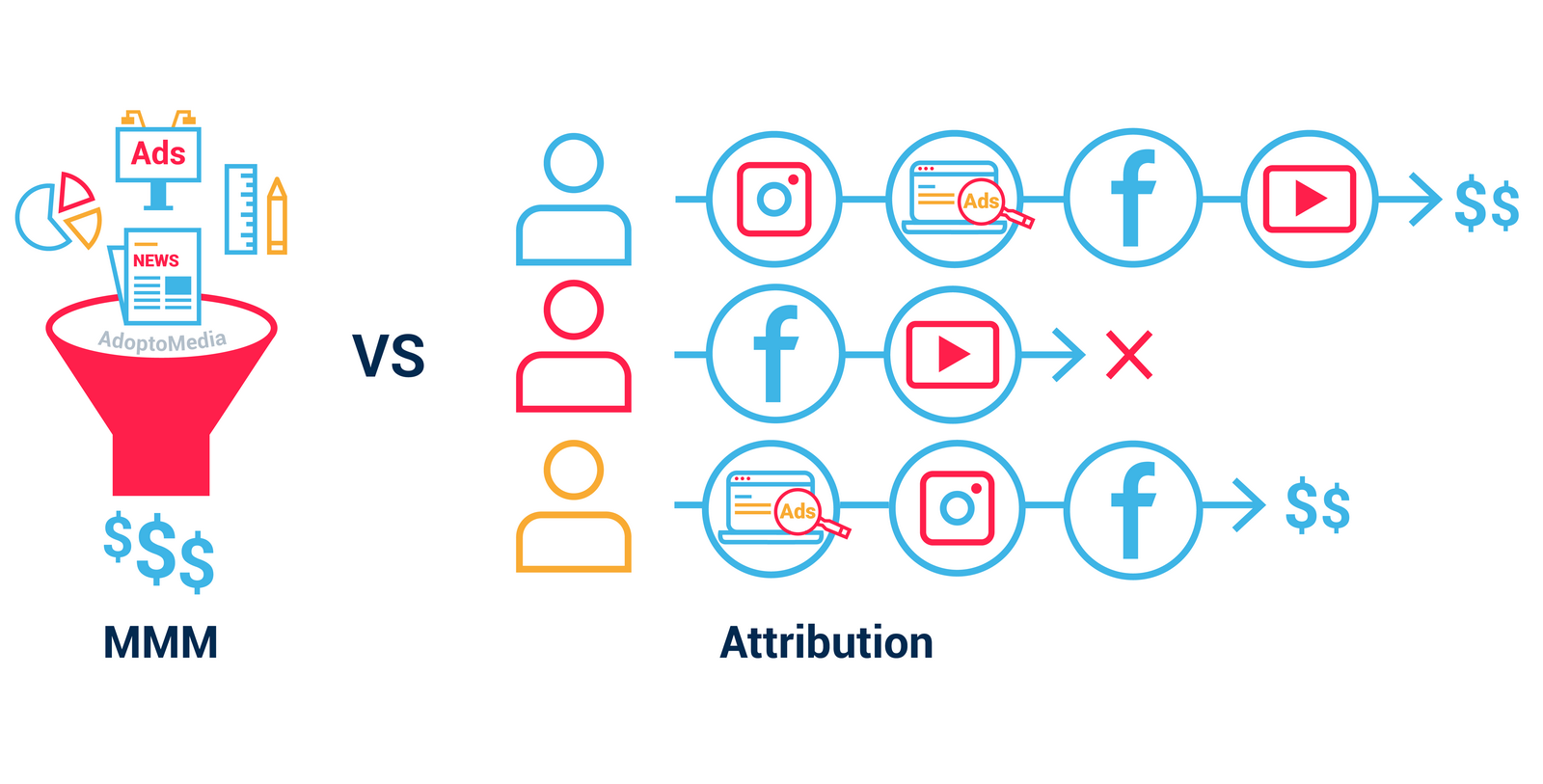
We are trying to keep you updated on all marketing measurement trends, that’s why we prepared an article on the use of measurement tools after the phase-out of cookies and IDFA. Get ready to privacy changes and apply solutions that won’t be affected by the new conditions. See how MMM, MTA, brand studies and other approaches are going to function without third-party cookies.
According to EXL Service, retail CMOs and marketing managers invest 8-10% of their sales revenue into marketing. An important thing here is to distribute the budget between different media channels in the most effective way and make sure that all expenditures yield a positive return. What we need are metrics that accurately reflect ROI at a sufficiently granular level. Unfortunately media measurement is currently not keeping pace with business needs in this rapidly evolving landscape, which is shifting from traditional TV to a multi-platform video approach. At CIMM’s request, the current state of marketing and media ROI analysis was examined. The Coalition for Innovative Media Measurement (CIMM) is a group of content providers, buyers, and sellers promoting innovation for in audience measurement across Television, Internet, and Mobile platforms in the USA. Among CIMM members are CBS, Discovery, NBC, P&G, and The Walt Disney Company.
In this article we are going to provide a brief overview and comparison of two major tools that are currently used to measure marketing ROI, which are:
- Marketing Mix Modeling (MMM)
- Attribution
Attribution and MMM are different analyses that are implemented with the same purpose: to evaluate whether budget allocation is appropriate, to fine-tune the media mix, and to determine where to increase or cut investments for the best results..
MMM is an analytical tool that quantifies the impact of each element in marketing and advertising campaigns based on return on investment (ROI) and effectiveness. This approach uses regression and other statistical methods to assess how budget allocation by channel affects incremental sales.
Attribution is the process of identifying the marketing stimuli or touchpoints consumers engage with before making a purchase (referred to as “conversion”). It encompasses various methods, including digital, television, multi-touch, and cross-channel attribution.
In the table below you can see the strengths and weaknesses of the two.
| MMM |
|
It can explain most of the fluctuations in sales.
|
|
It is a time-tested statistical technique that has proven effective.
|
|
It is well understood by management.
|
|
It takes into account all major sales drivers, including seasonality, competitors’ activities, and trade and consumer promotions.
|
|
It is unlikely to give undue credit when it comes to cross-media contributions.
|
|
There are no concerns about compliance with data privacy regulations.
|
|
It operates at too macro a level and is slow and backwards-looking.
|
|
It is usually conducted only once a year.
|
|
The results are not granular enough to drive tactical decisions and optimization
|
| Attribution |
|
It accounts for media placements, creative executions, and their synergistic combinations.
|
|
It offers highly granular outputs with the possibility of updating models weekly, allowing for influences on timing and tactical decisions.
|
|
It operates at a micro level, focusing on individuals, households, devices, and events.
|
|
It implements the newest techniques, such as AI and game theory.
|
|
The most advanced systems connect the results to Data Management Platforms, online marketplaces and dynamic ad targeting.
|
|
It can attribute too much credit to digital media if other factors aren’t taken into account.
|
|
Most systems do not account for baseline sales or consumers’ prior purchase habits.
|
|
The quality of household-level data can be questionable.
|
|
It involves untested data and techniques.
|
|
It hasn’t been used long enough to figure out what works best for certain purposes.
|
|
The results depend on incorporating offline media information.
|
|
It does not always consider factors such as promotions, pricing, brand momentum, seasonality, and economic conditions.
|
|
It’s algorithms are not transparent enough.
|
| MMM | Attribution |
|
It can explain most of the fluctuations in sales.
|
It accounts for media placements, creative executions, and their synergistic combinations.
|
|
It is a time-tested statistical technique that has proven effective.
|
It offers highly granular outputs with the possibility of updating models weekly, allowing for influences on timing and tactical decisions.
|
|
It is well understood by management.
|
It operates at a micro level, focusing on individuals, households, devices, and events.
|
|
It takes into account all major sales drivers, including seasonality, competitors’ activities, and trade and consumer promotions.
|
It implements the newest techniques, such as AI and game theory.
|
|
It is unlikely to give undue credit when it comes to cross-media contributions.
|
The most advanced systems connect results to Data Management Platforms, online marketplaces, and dynamic ad targeting.
|
|
There are no concerns about compliance with data privacy regulations.
|
|
|
It operates at too macro a level and is slow and backwards-looking.
|
It can attribute too much credit to digital media if other factors aren’t taken into account.
|
|
It is usually conducted only once a year.
|
Most systems do not account for baseline sales or consumers’ prior purchase habits.
|
|
The results are not granular enough to drive tactical decisions and optimization.
|
The quality of household-level data can be questionable.
|
|
It involves untested data and techniques.
|
|
|
It hasn’t been used long enough to figure out what works best for certain purposes.
|
|
|
The results depend on incorporating offline media information.
|
|
|
It does not always consider factors such as promotions, pricing, brand momentum, seasonality, and economic conditions.
|
|
|
It’s algorithms are not transparent enough.
|
As we can see, neither of the tools is perfect. The idea of integrating the strongest aspects of the two approaches to achieve the best results seems quite obvious. This integration is the challenge marketers are facing today, as no validated linking technique has been provided yet.
There have been discussions about a two-staged model, where a traditional MMM would be applied first, followed by attribution to further process the results. It’s worth mentioning, however, that while MMM and attribution initially focused on different ends of the media spectrum, they have begun to move towards each other. Both methodologies are now incorporating areas they hadn’t previously analyzed; for example, attribution is integrating TV and other offline media channels, while MMM is increasingly exploring digital media. Currently, there are at least 26 various modeling techniques across the spectrum of Marketing Mix Modeling and Attribution.
A recent study by the Mobile Marketing Association showed that 39% of marketers currently use multi-touch attribution and that figure is expected to reach 75% in the next two years.

AdoptoMedia offers an advanced MMM solution combined with AI that can be beneficial for advertisers in both tactical and strategic tasks. Our tool calculates the contribution of each channel in the marketing mix to sales and other KPIs, taking into account numerous factors, including the synergy between channels.
With AdoptoMedia, you can measure ad campaign ROI by channel, run “what-if” scenarios, and optimize budget allocation for future campaigns. In this Case Study on modeling a bank’s media mix, AdoptoMedia assisted in navigating investment strategies. By implementing machine learning and Big Data, we developed a forecasting model and optimized the ad budget. This resulted in a 15% ROMI increase due to the elimination of inefficient ad channels.


